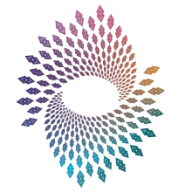Alignment vs. Agreement: Navigating Differences in Relationships
- POSTED ON MAY 30, 2019

The essence of “Co-Active” is the understanding that there is no ONE right way. Swimming in paradox, we are irrevocably interdependent and – at the same time – incredibly unique. We can remain in solid relationship with each other even while we disagree, sometimes passionately, about everything from effective parenting to the appropriate response to global warming.
None of us has all the answers to the problems we face. No matter how wise, insightful, or informed, individually we can only offer a piece of the equation. It is through dialog, deep listening, passionate disagreement, and the ensuing ALIGNMENT around something larger than a singular, isolated point of view, that will pull us into the next level of evolution for our planet.
Seeking ALIGNMENT is a fairly radical concept. In general, we have our own points of view. If the process is somewhat open and inclusive, we discuss the options and share our points of view. Then there is a decision making process. Sometimes we vote, and other times there is a hierarchy or power structure with designated people responsible for deciding. There is both the abuse of power, and attempted structures to protect from those abuses. The focus is on the WHAT: paint the bathroom blue or pink, create a national health care system or not?
With alignment, the focus is on the WHY. Why are we painting the bathroom? Why do we care about health care in our country? Why is this important? All of the agreement and disagreement gets taken off of the WHAT and focused on the WHY. We may still disagree passionately about the WHAT, but it is much easier to align around a common WHY.
Once we have alignment around a WHY, we are standing together, rather than on opposite sides of the table. We can continue to disagree and hold firmly to our points of view, all the while knowing that we are working from a similar context and are therefore united.
Once this alignment has taken place, it is much easier for all involved to empower whatever decision making process is most useful so that forward action towards our shared WHY can occur. We can appreciate, and even value, our very divergent points of view because we have a built a foundation of mutual respect and alignment on which to stand.
Our disagreement can even forge together into a third way. Larger than the sum of the parts and far beyond a “win-win” compromise, this third way emerges from the creative combustion of two (or more) people engaging in passionate discourse AND deep listening long enough for a brand new possibility to emerge. . . an option that was simply not accessible from inside each individuals point of view.
This holds much hope for transformation – this seeking of alignment and the possibility of an emergence of a third way. It captures the very best of us: our ability to imagine, create, and dream, coupled with our inherent capacity to respect, value, listen, and love





